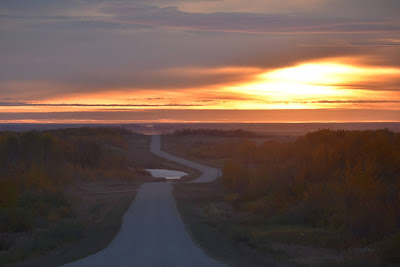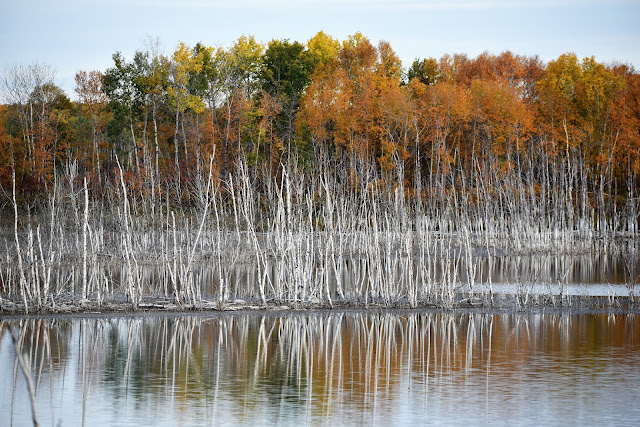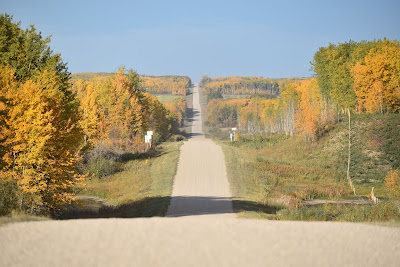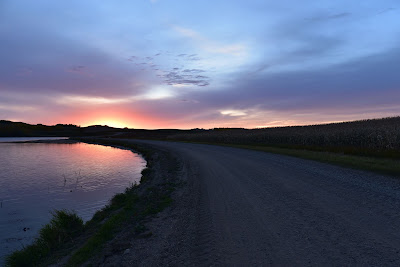How Many Fields does it take? : to Somewhere
Many many years ago we were travelling across Canada on Via Rail and we overheard a lady nearby telling her son to put down his Gameboy and to look outside at the beautiful landscape and watch the trees to learn about Canada. Dutifully he did as he was told, looked outside the iconic glass dome at the passing forest and lakes and then after several hours of viewing Northern Ontario’s coniferous forests asked a simple but poignant question : ‘How many trees does it take to know about Canada?’
At the time we applauded her efforts to get her child to engage with nature and to enjoy the experience at hand. These days that young man’s question resonates deeply – how many fields does it take to know the prairies? Whatever the number we certainly now must have some insight, yet we are both struggling to put it into words.
The prairies are certainly not what most Canadians think – flat, boring, and full of wheat– they are clearly so much more and often the beauty that one finds here transcends any attempt to write about it or photograph it.
This morning, we left our cozy cabin behind and began walking as the sun rose in a bright red blaze of glory, and we were still walking after it had set in a second burst of colour that was no less brilliant. It was a longer day than we had intended, but as the saying goes, all's well that ends well.
We set off down the undulating gravel road that comprised today's section of the Great Trail under a pink sky, surrounded by brilliant fall colours on all sides. It felt as though the oranges and yellows of the trees were a final gift of colour that was meant to keep us warm through the long winter months ahead. Despite the colours and the crunch of dried leaves underfoot, the air was warm and dry, and the smell of newly cut hay hung in the air.
As we enjoyed the forested landscape we passed many small ponds, their dark, still waters providing almost perfect reflections of the fall colours. Many had white birch trunks crowded in clusters along the edges, adding contrast to the scene. As we approached each pond large flocks of ducks took to the air in an upward rush. The smooth surfaces of several ponds were broken by the long wakes of beavers swimming quickly away at our approach.
Tiny Buffleheads were the most abundant duck we encountered today, but we also spotted Mallards, Black Ducks, Green-winged Teals, Scaup, Ring-necked Ducks, and American Wigeons. Of course, long lines of Canada Geese, Snow Geese, Trumpeter Swans, and Sandhill Cranes passed by overhead throughout the day, bringing the clear blue sky alive.
Birds weren't the only wildlife we had the great good fortune to see today. Two extremely cute and fuzzy baby raccoon scurried across the road ahead of us. When they reached the far side they stopped in the tall grass, only their small masked faces peeking out at us. Not too much farther along the road we spotted a mule deer posing beside a hay bale. It's huge furry ears, with their black rims and white tips were pointed straight up at the sky. As Sean was photographing it, a second deer joined the first, and together they bounded off across the field with their distinctive gait that makes them look like they're bouncing on a trampoline.
Surrounded by green and gold marshes, stands of colourful trees, lush green hay fields, and mottled brown pastures, we continued down the hilly, undulating road. Even early on a Saturday morning there was quite a bit of traffic, and soon a pickup truck with two Indigenous men stopped to ask if we were hiking the trail. They had lots of questions, and asked if we'd heard any elk calling yet, and if we knew what they sounded like. When I replied that I wasn't sure what they sounded like, having only a vague and possibly incorrect idea originating from Tom Hank's Polar Express movie, the driver pulled out a long tube that to my ignorant eyes looked like a piece of PVC plumbing. He blew into it, releasing a long, loud, bugling call that seemed to resonate through the surrounding trees. It's not every day that you get an impromptu demonstration of an elk call!
As we passed a recently harvested grain field which was full of Canada Geese grazing on the left-over grain, a young couple passed us and then turned around to ask what we were up to, and to chat for a bit. After hearing our story they continued on with exclamations of 'You're our kind of people, safe travels!'
These two meetings were the first of many today, all of which were very friendly and encouraging. We only had one instance that made us uneasy, when a pickup truck came towards us, veered right over onto the edge of the road forcing us into the ditch, and then pulled a u-turn a few meters in front of us before speeding off in a spray of gravel. We never saw it again, and perhaps it had nothing to do with us, but it was a reminder that when we're out on the road, word of us walking can spread, and there really is nowhere to hide if things go wrong.
Despite the traffic it was a very pleasant morning. We passed several abandoned homes that stood as reminders of the past. a small group of Common Ravens were perched in the yard of one home, and another was full of Rock Pigeons that took flight with soft coo's as Sean approached to photograph them.
Around 10:00 am we passed a small homestead with goats, and then came to the Oscar Lake School. This Municipal Heritage Property was a small, white, one room schoolhouse. It was built in 1932 at the site of a school originally erected in 1912. The property wasn't just used to educate children, but it also hosted an array of community gatherings and events including local meetings, fundraisers, and socials. It stayed open until 1966, when local children started to be bused to surrounding communities.
The building was open, and when we looked inside we discovered it had been preserved as a museum. The wooden desks, with their holes for ink wells and single shelf for books underneath, the small wooden chairs, and the teacher's desk were exactly like the ones that were in my elementary school, as was the long black chalk board at the front of the classroom. The wooden building even smelled like my school! Nothing makes you feel old like finding the things of your childhood in a museum! Huff.
As the morning wore on and turned to afternoon we gradually left the trees behind and found ourselves in flatter, more open farm country once again. We passed Alticaine, which seemed to consist of a single farm and a grassy track where the CNR line used to be. Around us many farmers were harvesting their fields, and a few were ploughing, adding squares of rich dark brown to the patchwork tapestry of green, gold, and light tan covering the rolling hills.
As we were trekking along the straight gravel road we had another unexpected wildlife surprise. In a freshly ploughed field beside us there stood a beautiful black bear! It was standing tall, front paws raised high and head weaving back and forth, trying to get a good look at us. It stayed upright for a few moments, then turned and walked a few steps. It stopped to look back before ambling slowly towards the trees at the far side of the field. It was a large, plump, shiny, healthy looking bear, and we very much enjoyed meeting it.
As late afternoon approached we found ourselves in a geologically interesting area, that I lack the knowledge to adequately interpret. We had slowly climbed throughout the afternoon until we came to the lip of a valley, the fields and forests stretched out below us in the golden light of the late afternoon. We left the straight gravel road, and followed a winding track down the steep side of the valley, winding among forested hills and coulees.
When we reached the bottom of the slope we crossed a large, flat expanse of farmland that felt like it was on the bottom of a lake bed. Our dirt track took us beside a pasture, where a large group of cows came over to stare at us as we walked slowly past. Next we found ourselves winding through fields of grain where the farmers were out harvesting. They watched us as we slowly crossed the valley, and when we reached the far side they drove over to chat. They were very friendly, but seemed a little concerned about where we would stop for the night - grilling us about what hotels and campgrounds we had been at lately clearly inferring that camping was not welcome and hoping we wouldn't create a problem on their farm.
We slowly climbed up the other side of the valley, again finding ourselves in wide open fields. By this point the sun was sinking fast towards the horizon, and we were beginning to look for spots to camp. Unfortunately, we found ourselves in open, rolling pasture land. Small pothole lakes dotted the fields, and there were small pockets of trees, looking like very tight, contained units in the middle of the open pastures. Sadly for us, the road was bordered on both sides by well-mended, unbroken, barbed-wire fencing to keep the cattle from straying. This gave us food for thought, as it suddenly occurred to us that we may well be headed into more ranches and pasture land when we reach Alberta, which could make sheltered camping spots difficult to find.
On and on we hiked in the cool, beautiful evening, looking for a sheltered, hidden place to pitch the tent. As we came to a turn in the road we heard the yipping and howling of coyotes quite close by, and as we passed a small lake we spotted two of them crossing the road ahead. Their reddish-brown coats blended with the dried grasses of the pastures as they loped gracefully down the gravel road. In a field beside them we spotted a striped skunk foraging among the tall grasses, but curiously it was completely unconcerned by the activities of the coyotes.
We continued on, seeing more large boulders stacked in piles in the pastures and bordering the field edges than we've seen so far anywhere on the prairies. We passed a small home with four large dogs outside, two Labrador Retrievers, a Saint Bernard, and another large companion. They came flying down the road at us barking fiercely and snapping at our legs until we'd finally passed their home. It felt like we were wading through a sea of over-excited canines, and somehow had to pass the challenge to continue on our quest.
Suddenly we found ourselves weaving through very steep, tall, round hills that were covered in short grass and scattered boulders. It reminded us strongly of being in the Pyrenees in France and Spain. We passed a farm unexpectedly flying a New Zealand flag, nestled among the tall hills. Still the fields, forests, and lakes on both sides of the road were fenced off.
Looking at the satellite image we noticed a forest a few kilometres on and made a push for it as the light faded to darkness and the moon rose. Farmhouses were closer together in this stretch, meaning that if we simply pitched the tent on the grassy side of the road we would likely end up scaring someone, and we always prefer to avoid that if at all possible.
As we hurried along the edge of the road, traffic inexplicably began to pick up on the quiet back country road. Several drivers stopped to ask if we were okay. Then a pickup truck blew past at about 120 kph, sliding and swerving on the loose gravel of the road, very narrowly missing us, and nearly driving into the ditch ahead of us. We decided that was enough, and headed for the nearest patch of trees.
Yet as we reached them 2 men on ATVS raced up, informed us that they had been called and told we were walking through the area. Their next question, as everyone’s had been this afternoon, was – where are you staying tonight? Before either of us could respond they answered, “because there is nowhere for you here!” Having only received amazing support and kindness in Saskatchewan their comments stunned us as out of character for everyone else we had met in the province. Yet clearly the response to our trek has again shifted. There was no mistaking that throughout most of the afternoon the focus by most who chatted with us was on whose land we took our breaks on and where we slept each night.
Frustrated and now standing on the side of the road in the dark we turned to walk on and were then followed for 2 concessions by these men on their ATVs who drove 10 feet behind us constantly revving their engines anytime either of us paused. By 9 pm we were now cold and having hiked for over 12 hours and more than 50 km in the day, but that did not seem to matter to either of these individuals who were now taking great delight in pestering us to keep moving. Then just as it felt as though we would have to trek the remaining 45 km to North Battleford with our 'escorts' behind us just suddenly as they had come, both men drove into the nearby ditch, did a U-Turn and raced back in the direction we had hiked. Clearly we had reached the end of their property and they were no longer concerned about what we did. We were again alone and so after another 20 minutes of searching we soon found a clearing on public land to pitch our tent.
It is always more challenging to find a place to pitch the tent after dark. Finding flat, open ground among trees is especially difficult, because you can't see the branches that are trying to smack you in the face, and you can't see the sticks and debris on the uneven ground. Luckily, St. Roch and whatever other entities protect pilgrims, hikers, and travellers were looking out for us, and we found a suitable spot, tucked out of sight among the trees. It was a timely end to a 55.6 km day and given our exhaustion we didn't bother to make dinner or even inflate our thermarests, we simply pulled out our sleeping bags and went to sleep.
We have now walked 257 km of Trans Canada Trail since leaving Saskatoon. On our virtual Conqueror's Challenge, we have reached Villafranca Montes de Oca on the Camino de Santiago, and one real tree has been planted for our efforts. We didn't stop in this town on our actual hike in 2016, staying instead in Agès, which was only one day before Burgos, a major milestone on the pilgrimage.
See you on the trail!
Remember to follow our entire adventure here : www.comewalkwithus.online































































Comments
Post a Comment